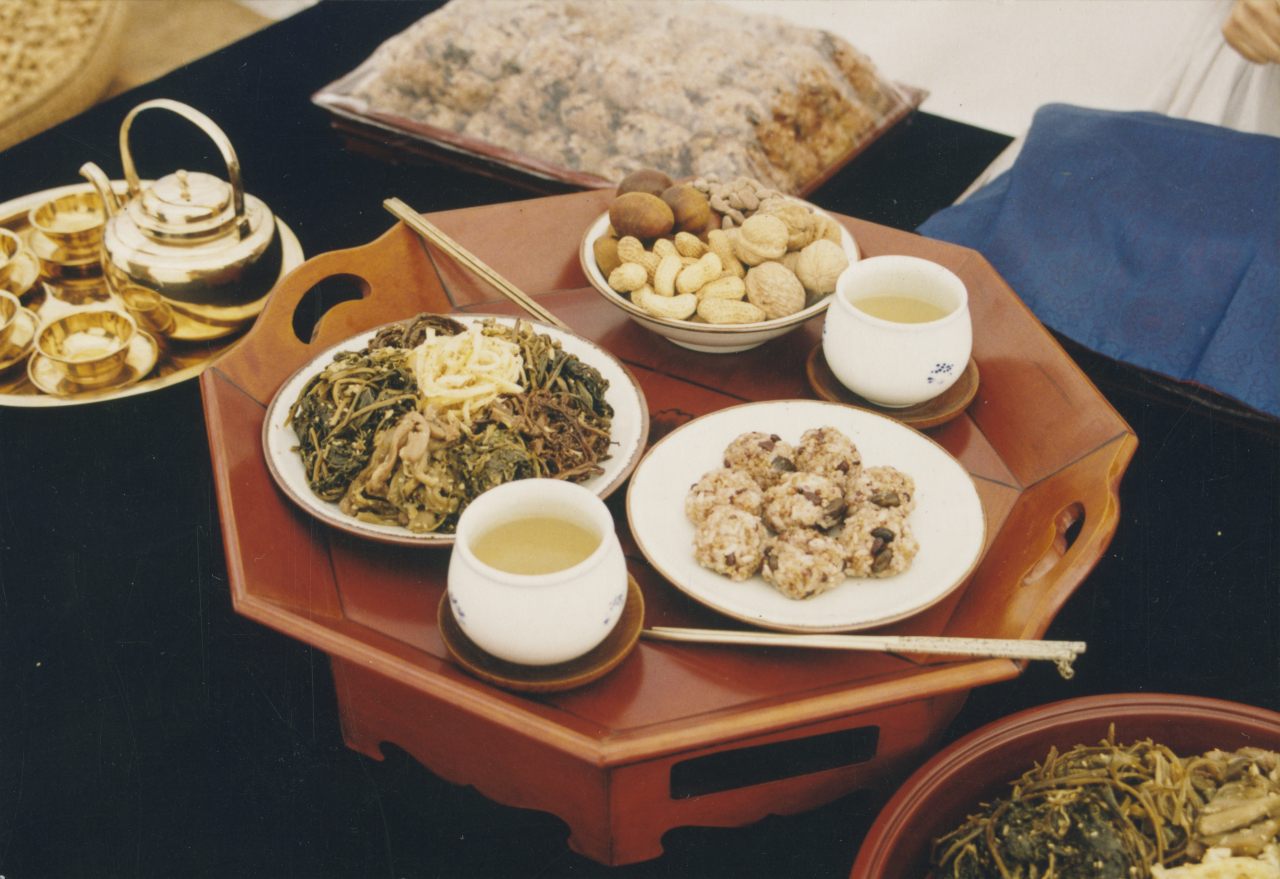“I crack nuts with my family on Jeongwol Daeboreum. I am not sure why, but I guess the tradition is supposed to shoo away some bad ghosts and bring good luck,” Kang Min-woo, 26, said. “I do know that there are some other Jeongwol Daeboreum traditions, but I do not celebrate them.”
Saturday is “Jeongwol Daeboreum” or “Daeboreum,” a traditional holiday marking the first full moon of the Lunar New Year. However, traditions are slowly fading, especially among the young.
“I teach third grade students. A brief lesson about Jeongwol Daeboreum and its traditions appears in their textbook, mainly explaining how our ancestors used to celebrate it,” elementary school teacher Kim Dong-yeon, 30, told The Korea Herald. “Most students only know about big traditional holidays like Chuseok and Seollal. Since Jeongwol Daeboreum is not the holiday that people, in general, celebrate nowadays, not many students know about it.”
Jeongwol Daeboreum traditions, full of superstition?
Some experts believe Jeongwol Daeboreum traditions have faded due to industrialization. Many traditional practices focus on wishing for a bountiful harvest.
“Detailed records of Jeongwol Daeboreum traditions can be found in a book written during the Joseon era. Bits of records that hint at the existence of traditions can also be found in the “Samguk Yusa” (“Memorabilia of the Three Kingdoms”),” said Jung Yeon-hak, curator of the National Folk Museum of Korea. “Since our ancestors at that time lived in an agricultural society, wishing for a good harvest was crucial for them.”
“In the absence of science and medicine, there was no way to prepare for an unpredictable future, so our ancestors had to rely on the power of superstition to overcome the unpredictability,” the late Jang Ju-geun, a scholar of folk studies, wrote in the Encyclopedia of Korean Folk Culture, published by the National Folk Museum of Korea.
The most widely eaten food on Jeongwol Daeboreum is a mixture of rice, millet, sorghum and two kinds of beans called “ogokbap.” Although this is one of the few Jeongwol Daeboreum traditions that have survived, the reason people eat it is often forgotten.
"The beans and grains in ogokbap represent all the different kinds of crops that our ancestors planted. They ate them while hoping for a good harvest throughout the year,” Jung at the folk museum said. “Along with ogokbap, our ancestors also ate seven different kinds of seasoned vegetables for the same reason.”
Many people also drink “gwibalgisul,” or “ear-quickening wine,” on the morning of Daeboreum in belief that it can keep people’s ears healthy and cause them to hear happy news throughout the year.
“Any kind of alcoholic drink cannot be good for your ears,” said Lee Nak-joon, a doctor who specializes in ear, nose and throat health. “Maybe back then they mistakenly thought that it could improve ear (health) because alcoholic drinks can cause your ears to swell, which can temporarily make people hear their own voices louder.”
Another Daeboreum tradition involves using one’s teeth to crack open the shells of “bureom” or nuts such as walnuts, pine nuts, chestnuts, ginkgo nuts and peanuts. The ancestors of modern Koreans thought this would prevent them from developing boils on their skin throughout the year. Although nuts are nutritious foods, experts say they have no proven ability to prevent boils.
Don’t underestimate ancestors’ wisdom Nevertheless, there are some traditions that have been passed down for a reason.
“Jeongwol Daeboreum is unique because the day has lots of activities that are done in groups. Usually, our ancestors who used to harvest rice were related by blood. But those that cultivated other crops were not. This necessitated activities that could promote unity,” professor Lim Jang-hyuk of Chungang University’s Asian culture department told The Korea Herald.
One of the better-known activities done on the first full moon of the lunar calendar is “jwibulnori,” burning the dry grass on ridges between fields. Nearby, children swing cans full of holes around in circles, with charcoal fires blazing through the holes.
“The purpose of jwibulnori is to get rid of rats. At first, it just involved setting a fire. The activity of children twirling around cans full of holes was added on later for entertainment purposes,” Jung said.
Another fire-related ritual conducted on the day is “daljip taeugi,” which can be translated as “burning the moon house.” Young villagers build a house called a “daljip,” or moon house, from straw, pine needles and tree branches and set it on fire.
“They also placed bamboo pieces in the moon house, which exploded like firecrackers,” Jung said. “There are quite a number of fire-related Jeongwol Daeboreum traditions.”
These activities were aimed at getting rid of harmful pests and rats, which made their homes in the straw that had piled up during the winter months. The leftover ashes were used as fertilizer.
By Song Seung-hyun (
ssh@heraldcorp.com)








